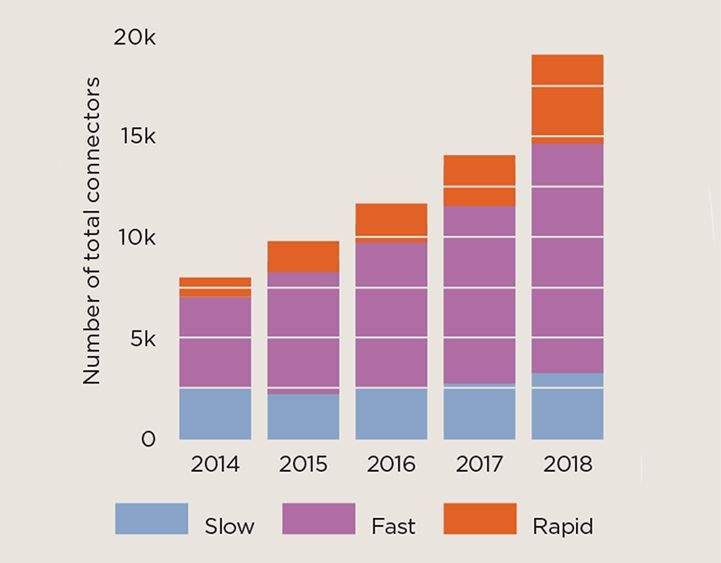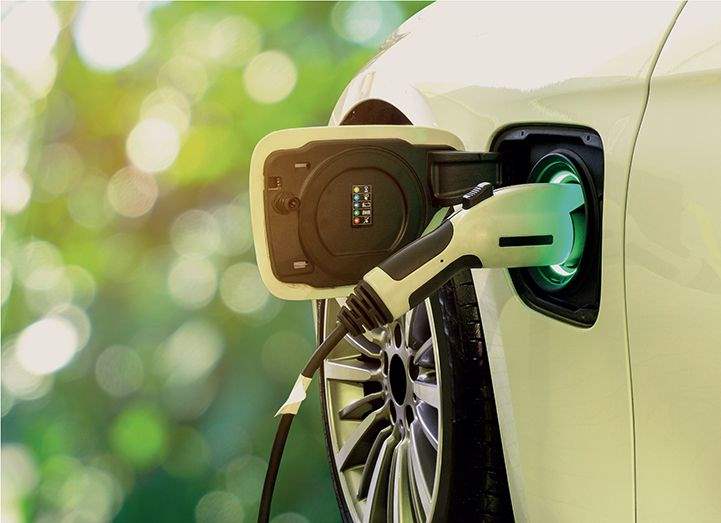The growing ownership of electric vehicles presents interesting opportunities for real estate owners
The switch to electric vehicles is gathering pace. In 2018, sales grew by around 20% and they made up around 6% of all new car registrations. This is news that will be welcomed by the Government, which has made strong commitments to reduce roadside emissions, firstly in its Clean Air Strategy and then more specifically in its Road to Zero Strategy that sets out its plans to enable a massive expansion of green infrastructure across the country. The Government’s aim is that by 2030 the ultra low emission sector will account for half of all new cars bought and that by 2040 there will be no new petrol or diesel cars or vans sold in the UK. Scotland aims to be at this point by 2032.
.jpg)
With a growing ownership of electric vehicles (EVs) comes a growing need for a charging network. For real estate owners this presents interesting opportunities
Savills Energy
With around 2.5 million new car registrations each year, the potential growth for the sector is huge. While hydrogen fuel cell vehicles will account for some of that growth, it is the electric and hybrid market that is leading the charge. So much so that this year an electric car, the Kia e-Niro, was crowned Car of the Year 2019 by What Car? Kia’s UK CEO doesn’t take this sort of recognition lightly: “This marks an important milestone as we approach the tipping point where every motorist will be seriously considering buying an electric car as their next car,” he said.
With a growing ownership of electric vehicles (EVs) comes a growing need for a charging network. For real estate owners this presents interesting opportunities.
“Shell and BP are busy putting rapid chargers into the forecourts of petrol stations, but is that where people really want to spend time while their car charges?” questions Thomas McMillan of Savills Energy. As an EV owner himself he says the last place he wants to be is in a fumey service station. “Far better for the car to charge while I’m doing something I want to with my time, whether that’s going to the gym, the supermarket or enjoying a coffee.”
He advises real estate owners to look at the amenities they already offer and consider whether they could enhance this, or pull in more visitors, by adding charge points. “If you have a retail or leisure outlet, for example, a rapid charge point in the car park makes perfect sense.” As do chargers next to supermarkets, restaurants and work spaces – anywhere people might spend a bit of time.
Real estate owners need to consider the average dwell time that visitors spend at their attractions to work out if a charger – and what type – is viable.
.jpg)
Charging connectors across the UK regions
Source: Zap-Map
“There are three types of charger at the moment,” explains Thomas. “The trickle charger that takes between six to 12 hours to charge a vehicle and is typically what people install in their homes. The fast charger that takes 1-5 hours, depending on the connection and the rapid charger that can recharge a car’s battery to 80% full in 20-40 minutes.”
While trickle chargers can run off mains electricity, rapid chargers in most cases will need to be situated near a substation or an overhead three-phase power line. The closer they are, the lower the grid connection cost.

Charging connectors by type
Source: Zap-Map
The challenge is clear: if we’re to clean up our economy and tackle climate change, the way we power our cars and homes will need to change for good
Lord Deben, Chairman of the Committee on Climate Change
There are more than 20 different operating companies running public charge points at the moment. Drivers usually sign up to be a member of a particular network. Some operate pay-as-you-go systems, while others work on a subscription basis. While some only off er their own network of chargers to drivers, others operate across several networks – clearly a more popular model for users. Generally, all operators have an interactive map of their charge points, so as soon as you put one in, EV drivers on that network would know it was there.
Real estate owners would need to do their research to select the right partner for their charge points. “One that supplies reliable chargers with a good digital interface”, recommends Thomas.
The model for how the finances and operation of the charge points would work out would tend to involve the real estate owners leasing the space to an operator. The operator shoulders all the costs of the charger and installation and pays the real estate owner an annual rent.
“It’s similar to the mobile phone mast sector,” explains Thomas. “Rents hugely vary depending on the situation. It might not seem like much, but it could also give your business the edge over a neighbouring similar business.”
There are grants for installing chargers at the moment, which diff er between England, Scotland and Wales.
Some grid operators are predicting that if charge points continue to be installed in an ad-hoc way without smart management systems there will be insufficient grid capacity after the first 10% of domestic properties are provided with connections. This will impact on all asset owners, not just for EV installations, so securing a power supply early is essential.
CHARGE POINTS IN NEW DEVELOPMENTS

Last July the Government published its Road to Zero Strategy, which outlined its proposals for increasing the uptake of ultra low emission vehicles. In order to ensure the EV charging infrastructure is expanded, it proposed that: “All new homes should have a charge point available”. Clearly this will have consequences for residential developments. The strategy document said: “We plan to consult as soon as possible on introducing a requirement for charge point infrastructure for new dwellings in England where appropriate,” but as yet no consultation has been announced.
ELECTRIC FARM VEHICLES
While there is interest in developing electric tractors – one prototype from John Deere keeps costs down by employing an extremely long extension cord rather than batteries – the realities are that these are still several years away from becoming a viable option for most UK farmers. Those wanting to move away from diesel, however, could look into electric utility vehicles. They appear to have moved on from glorified 4x4 golf buggies in recent years, now offering enough power to get up hills and the range to get you home again.
.jpg)





.jpg)